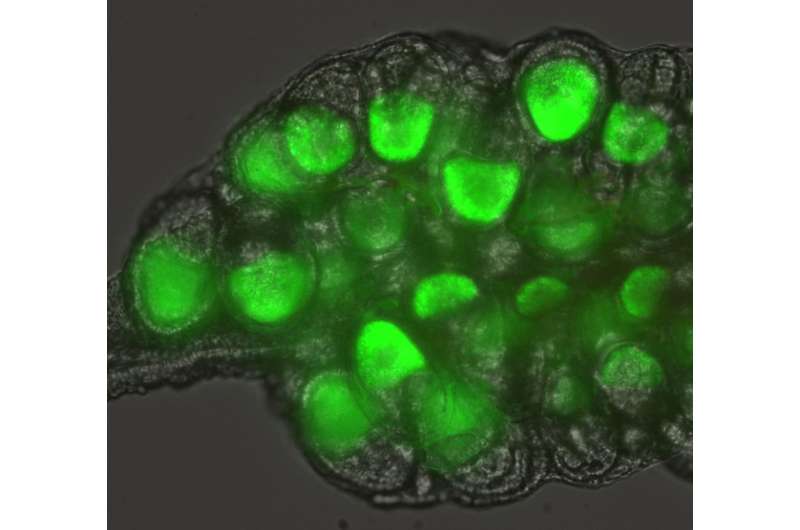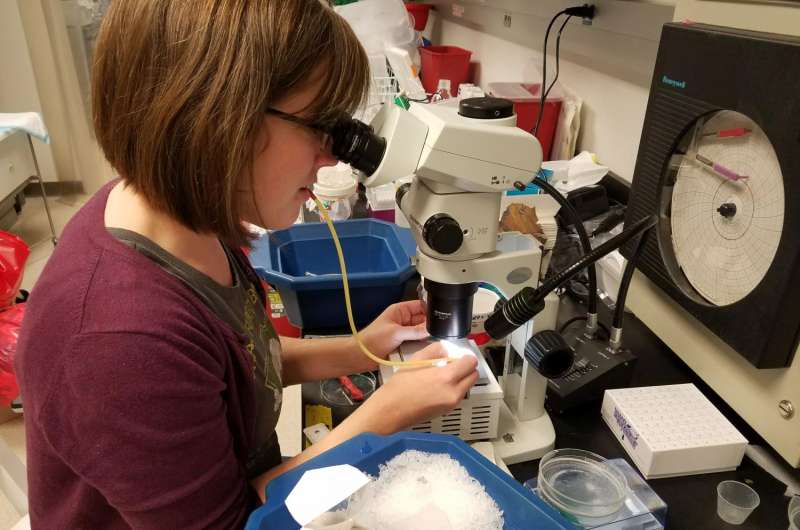Researchers to develop new gene-editing method for the study of arthropods

A grant from the National Science Foundation will enable a Penn State-led team of entomologists to develop and disseminate a technology they say could bring gene-editing capabilities within reach of everyday scientists, regardless of the arthropod species they study.
The $2.5 million award is part of NSF's Enabling Discovery through GEnomic Tools (EDGE) program, which funds projects that work to develop new genomic tools and provide the research community with information about how to use them.
The grant will support the development of a technology called Receptor-Mediated Ovary Transduction of Cargo—dubbed ReMOT Control—which was conceived in the laboratory of lead researcher Jason Rasgon, professor of entomology and disease epidemiology in Penn State's College of Agricultural Sciences.
"Genetic manipulation is a powerful technique for addressing research questions in arthropods," Rasgon said. "Current approaches rely on delivering gene-editing material to arthropod eggs by embryonic microinjection. But this process is very challenging, is limited to a small number of arthropod species, and is inefficient even in optimized species."
As a result, he said, researchers recognized a critical need to develop methods for arthropod genetic manipulation that are simple, accessible for many researchers and generally compatible for a large variety of arthropod species.

This led to the development of ReMOT Control, which can deliver gene-editing cargo to a targeted portion of the arthropod genome by easy injection into female arthropods during egg development. ReMOT Control builds on the burgeoning use of CRISPR/Cas9 technology, a revolutionary new method for delivering a gene-splicing enzyme to a region of DNA to delete or add genes controlling certain traits. CRISPR/Cas9 holds promise in solving many challenges in medicine, agriculture, and food production and processing.
With support from the NSF grant, the researchers will adapt ReMOT Control for use with specific species of arthropods, while also developing the technology for universal application among diverse species. The team will disseminate the technology by making reagents publicly available to other researchers and will educate the scientific community and the public about the benefits of these tools through workshops, social media, symposia and other outreach venues.
Rasgon contends that ReMOT Control technology and methodology will have broad application for scientists involved in research on animal behavior, animal physiology, insect-plant interactions, sustainable agriculture and public health.
"ReMOT Control will break down barriers to genetic modification, allowing researchers in diverse animal systems to move beyond correlation to accurately and precisely study gene function," Rasgon said. "Our overarching conceptual goal for this project is nothing less than the complete democratization of gene-editing capability for all researchers working in any arthropod system."
Provided by Pennsylvania State University




















